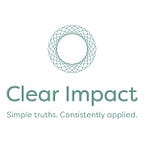The Myth of Team-Building
Why are most team-building activities at best entertainment, and at worst cynicism-generators and a waste of money?
- Organizations want to increase engagement without addressing the factors that are disengaging their employees. Engagement is not about playing games, solving puzzles, or listening to inspirational messages. It is about the perceived ability to enjoy the work we do, enjoy our work interactions, and actually make a difference. It is about having workflow that allows people to feel that they are producing quality work. It comes from leaders who are able to create cultures deeply imbued with trust and psychological safety, in which differing perspectives are highly welcomed and then integrated where appropriate. “Integrated” does not mean agreeing with everyone’s perspective, but rather taking them all into account. Most senior leaders want engagement scores to go up without addressing the root causes of existing disengagement. They do not address issues of trust and safety, nor power-dominated hierarchies that stifle creativity and honest input. Employees know when their real needs are being addressed rather than being placated.
- The organization or team is not aligned to meet its Purpose. We assist organizations and teams to clarify their Purpose (what are we here to do?), and then to collectively identify strengths and challenges in that pursuit. When this dialogue happens in a safe and collaborative context, everyone feels part of the effort to be more successful. They then work together to craft plans that address the challenges, as much as possible, while building on the strengths. Team-building needs to occur after this initial alignment. What are we trying to accomplish? Do we need to know each other better? Clarify roles? Learn new skills? Change the way we work together? People are much more engaged in team-building activities when they understand its context because they were part of identifying what is needed, and they see how it fits into the overall team and individual goals. As much as possible we start a team-development exercise by having individual confidential interviews with each participant. We gather their perspectives on the Purpose or desired organizational outcome, and associated strengths and challenges, and then report back on patterns or trends while being careful to protect confidentiality. This makes it more likely that together we’ll be addressing root causes rather than symptoms.
- People can only think at the level that they can think. There is a complexity gap. Please see this important article that differentiates leadership capacity from leadership competencies. Most leaders and team members do not think at a level that’s adequate to address the increasing volatility, uncertainty, and rapid change they face. Even if they are all in the same room and sincerely working on an effective path forward, there will be limits to what they develop. Introducing them to actionable models that help them to think at higher levels of complexity greatly facilitates the quality of dialogue and the power of subsequent actions.
- Awareness ≠ Change. We humans operate largely on automatic pilot. We think and act in habitual ways. Even when we learn new perspectives that truly intrigue us, ones that we think have the potential to really make a difference, we do not often do the necessary work to have these seeds take root and lead to real change. What does it take? Actively cultivating collective and individual reflection. We humans actually increase our collective and individual capacity only when we build in cycles of action and reflection, individually and collectively. We set goals, create plans, try things, step back and reflect on what happened and what we can learn , and then repeat these iterative cycles. We call these Integrated Cycles of Learning. This is what builds new neural pathways in humans, and effective processes in organizations and teams. Meaningful intervention into organizational/team culture requires senior leaders to continue to pay attention to desired changes, along with regularly scheduled collective follow-ups.
Clear Impact Consulting Group is Dr. Sandra L. Hill and Dr. Joel M. Rothaizer, MCC. We are organizational/team effectiveness consultants, executive coaches, and leadership development specialists. We have other perspectives on optimizing team functioning we would be happy to share. You can contact us at partners(at)clear-impact.com or visit our website, www.clear-impact.com. We have published most of our curriculum on Clear Impact Consulting Group — Medium.
